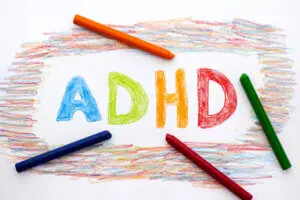
This blog is part of a series on Leading Children with Special Needs that provides strategies children’s missions discipleship leaders can use to include children with special needs in missions. If you’re new to the series, we encourage you to check out the introduction here.
The diagnosis of children with Autism Spectrum Disorder (ASD) has increased dramatically in the past few years. According to the Centers for Disease Control, approximately 1 in 36 children in the United States is diagnosed with an ASD. Boys are four times as likely as girls to be diagnosed with autism.
There are many helpful strategies to help leaders meet the needs of these children.
Structure and Consistency
With any child, structure is important; for a child with autism, structure and consistency are critical. She will feel more comfortable and adapt better if she knows what to expect every time she attends your missions discipleship group.
Additional Adult Leaders
If possible, it would be good to have an extra adult or two whose specific assignment is to work with the child with autism. This way, he will get the attention and help he needs, and the leader can continue through the lesson if other children are ready to move on. Additional leaders are also helpful in case the child with autism becomes overstimulated and needs to retreat to a quiet place to destress. Do make sure every child has the opportunity to be included in every activity, however.
Direct and Specific Communication
When giving instructions, adults in your missions discipleship group should speak directly and specifically to the child with autism. Make your directions clear, short, and concrete. Appropriate social skills and classroom rules may also need to be modeled for the child, so take advantage of “teachable moments” (for example, if a child snatches a colored pencil from another child, instead of reprimanding him, show the child how to use words or signs, if nonverbal, to ask for the colored pencil).
Multisensory Learning
Almost all children, including those with special needs, learn better using multisensory modes of learning. Anytime you can include several senses (hearing, seeing, touch, smell, taste) in an activity, more learning will occur. This is especially true for a child with autism.
Seek Help and Input from Parents and Professional Educators
Work with the parents of the child with autism. Ask them for any advice they can give you about how best their child learns or any considerations they can share. You can also reach out to educators in your church for help and advice or spend some time at your local library or do some internet research on the topic.
You have been called by God to lead children’s missions discipleship. That means God has a plan for you, for the children in your group, and for His glory. When you are tired or feel overwhelmed because a meeting didn’t go as you had planned, remember the bigger picture: the seeds you are planting — whether through a story you taught, an activity you led, or the way you treated a child with respect and love — will help direct that child toward a life lived on mission for Him. Trust God’s grace and His power that is made perfect in your weakness. Pray for the parents of the children you lead. And thank God for His beautiful calling in your life!
Disclaimer: The information shared on this page is not meant to diagnose or treat any neurological, psychological, or physical disorder or disability. We encourage you to seek a mental health professional or child development/educational specialist for individual consultation and care.
This blog is designed to help leaders as they teach children with special needs. The information provided includes tips and strategies but in no way equips leaders to diagnose problems children may be having. Use the information and suggestions to help you create a rich and caring learning environment for children in your church.


